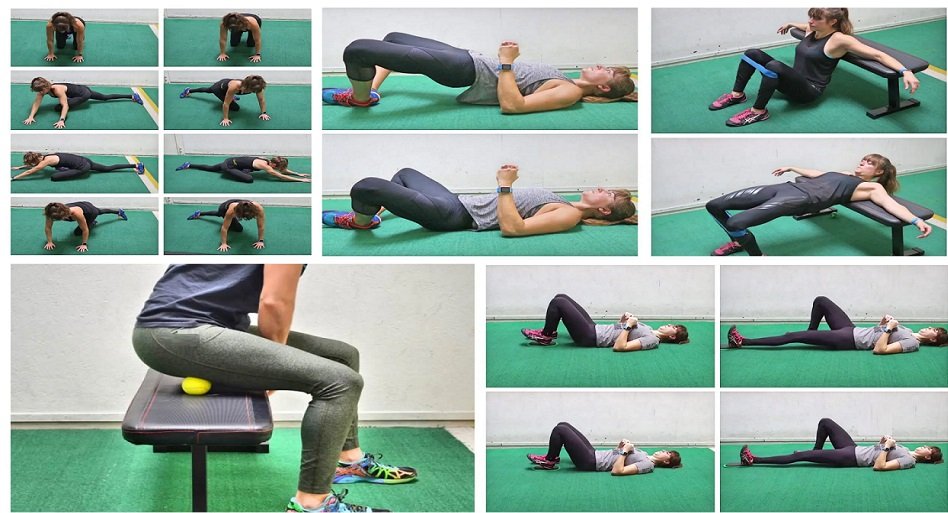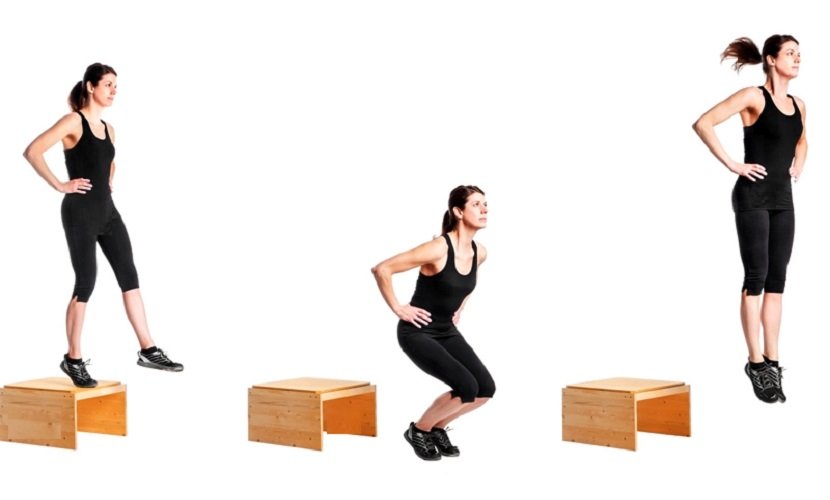Health And Fitness
10 Must-Try Cucumber Salad Recipes for Every Occasion

Image Source: pexels
Cucumber salads offer a delightful blend of versatility and flavor. These salads provide a refreshing and healthy option for any meal. Packed with nutrients like potassium, vitamins K and C, and folate, cucumbers support Health And Fitness. The high water content in cucumbers helps keep you hydrated and benefits skin health. Cucumber salad recipes suit various occasions, from casual picnics to elegant dinners. Enjoy the crisp texture and vibrant taste that make cucumber salads a favorite choice.
Classic Cucumber Salad Recipes
Ingredients
- 4 cucumbers, thinly sliced
- 1 large onion, thinly sliced
- 1/4 cup white vinegar
- 1/4 cup water
- 2 tablespoons sugar
- 1 teaspoon salt
- Freshly ground black pepper, to taste
Instructions
- Place the cucumber slices in a colander. Sprinkle with salt. Let sit for 30 minutes to draw out excess moisture.
- Rinse the cucumbers under cold water. Pat dry with paper towels.
- In a large bowl, combine the cucumbers and onions.
- Whisk together vinegar, water, sugar, and pepper in a separate bowl until the sugar dissolves.
- Pour the dressing over the cucumber and onion mixture. Toss to coat evenly.
- Cover and refrigerate for at least 1 hour before serving.
Creamy Cucumber Salad
Ingredients
- 4 cucumbers, thinly sliced
- 1/2 cup sour cream
- 2 tablespoons mayonnaise
- 1 tablespoon lemon juice
- 1 tablespoon fresh dill, chopped
- 1 teaspoon sugar
- Salt and pepper to taste
Instructions
- Place the cucumber slices in a colander. Sprinkle with salt. Let sit for 30 minutes to draw out excess moisture.
- Rinse the cucumbers under cold water. Pat dry with paper towels.
- In a large bowl, whisk together sour cream, mayonnaise, lemon juice, dill, sugar, salt, and pepper.
- Add the cucumber slices to the bowl. Toss to coat evenly with the creamy dressing.
- Cover and refrigerate for at least 1 hour before serving.
International Cucumber Salad Recipes
Greek Cucumber Salad
Ingredients
- 4 cucumbers, thinly sliced
- 1 cup cherry tomatoes, halved
- 1/2 cup Kalamata olives, pitted and sliced
- 1/2 red onion, thinly sliced
- 1/2 cup feta cheese, crumbled
- 2 tablespoons olive oil
- 1 tablespoon red wine vinegar
- 1 teaspoon dried oregano
- Salt and pepper to taste
Instructions
- Place the cucumber slices in a large bowl.
- Add the cherry tomatoes, Kalamata olives, and red onion to the bowl.
- Sprinkle the feta cheese over the vegetables.
- In a small bowl, whisk together the olive oil, red wine vinegar, oregano, salt, and pepper.
- Pour the dressing over the salad. Toss to coat evenly.
- Serve immediately or refrigerate for up to 1 hour before serving.
Fun Fact:
“Greek cuisine often features fresh and vibrant ingredients. This salad captures the essence of Mediterranean flavors.”
Thai Cucumber Salad
Ingredients
- 4 cucumbers, thinly sliced
- 1/4 cup rice vinegar
- 2 tablespoons sugar
- 1 tablespoon fish sauce
- 1 clove garlic, minced
- 1 red chili, thinly sliced
- 1/4 cup chopped peanuts
- 2 tablespoons fresh cilantro, chopped
Instructions
- Place the cucumber slices in a large bowl.
- In a small bowl, whisk together the rice vinegar, sugar, fish sauce, and garlic until the sugar dissolves.
- Pour the dressing over the cucumber slices. Toss to coat evenly.
- Add the red chili and chopped peanuts to the salad. Mix well.
- Garnish with fresh cilantro before serving.
- Serve immediately or refrigerate for up to 1 hour before serving.
Trending on TikTok:
“A viral combo with peanut butter, soy sauce, chili crunch, and rice wine vinegar has inspired many to try Thai cucumber salad. One commenter said, ‘I don’t like cucumbers but I find myself craving it because of these videos.'”
Cucumber Salad Recipes with a Twist
Spicy Cucumber Salad
Ingredients
- 4 cucumbers, thinly sliced
- 1 tablespoon salt
- 2 tablespoons gochugaru (Korean red pepper flakes)
- 2 cloves garlic, minced
- 1 tablespoon soy sauce
- 1 tablespoon rice vinegar
- 1 teaspoon sugar
- 2 green onions, chopped
- 1 tablespoon sesame seeds
Instructions
- Place the cucumber slices in a colander. Sprinkle with salt. Let sit for 30 minutes to draw out excess moisture.
- Rinse the cucumbers under cold water. Pat dry with paper towels.
- In a large bowl, combine gochugaru, garlic, soy sauce, rice vinegar, and sugar. Mix well.
- Add the cucumber slices to the bowl. Toss to coat evenly with the spicy mixture.
- Garnish with green onions and sesame seeds.
- Serve immediately or refrigerate for up to 1 hour before serving.
Cucumber and Avocado Salad
Ingredients
- 4 cucumbers, thinly sliced
- 2 avocados, diced
- 1/4 cup red onion, finely chopped
- 1/4 cup fresh cilantro, chopped
- 2 tablespoons lime juice
- 1 tablespoon olive oil
- Salt and pepper to taste
Instructions
- Place the cucumber slices in a large bowl.
- Add the diced avocados, red onion, and cilantro to the bowl.
- In a small bowl, whisk together lime juice, olive oil, salt, and pepper.
- Pour the dressing over the salad. Toss to coat evenly.
- Serve immediately or refrigerate for up to 1 hour before serving.
Cucumber Salad Recipes for Special Occasions

Source: inspiredtaste
Cucumber and Dill Salad for Summer Picnics
Ingredients
- 4 cucumbers, thinly sliced
- 1/4 cup fresh dill, chopped
- 1/2 cup sour cream
- 2 tablespoons white vinegar
- 1 tablespoon sugar
- Salt and pepper to taste
Instructions
- Place the cucumber slices in a colander. Sprinkle with salt. Let sit for 30 minutes to draw out excess moisture.
- Rinse the cucumbers under cold water. Pat dry with paper towels.
- In a large bowl, whisk together sour cream, white vinegar, sugar, salt, and pepper.
- Add the cucumber slices and fresh dill to the bowl. Toss to coat evenly with the creamy dressing.
- Cover and refrigerate for at least 1 hour before serving.
Picnic Perfection:
“Nothing beats a summer picnic with a refreshing cucumber and dill salad. The crisp cucumbers and tangy dressing make it a crowd-pleaser.”
Festive Cucumber and Pomegranate Salad
Ingredients
- 4 cucumbers, thinly sliced
- 1 cup pomegranate seeds
- 1/4 cup red onion, finely chopped
- 1/4 cup fresh mint, chopped
- 2 tablespoons lemon juice
- 1 tablespoon olive oil
- Salt and pepper to taste
Instructions
- Place the cucumber slices in a large bowl.
- Add the pomegranate seeds, red onion, and fresh mint to the bowl.
- In a small bowl, whisk together lemon juice, olive oil, salt, and pepper.
- Pour the dressing over the salad. Toss to coat evenly.
- Serve immediately or refrigerate for up to 1 hour before serving.
Holiday Highlight:
“The vibrant colors of this cucumber and pomegranate salad make it perfect for festive occasions. The sweet and tart flavors create a delightful contrast.”
Quick and Easy Cucumber Salad Recipes
Simple Cucumber and Tomato Salad
Ingredients
- 4 cucumbers, thinly sliced
- 2 cups cherry tomatoes, halved
- 1/4 cup red onion, finely chopped
- 2 tablespoons olive oil
- 1 tablespoon red wine vinegar
- Salt and pepper to taste
Instructions
- Place the cucumber slices in a large bowl.
- Add the cherry tomatoes and red onion to the bowl.
- In a small bowl, whisk together olive oil, red wine vinegar, salt, and pepper.
- Pour the dressing over the cucumber and tomato mixture. Toss to coat evenly.
- Serve immediately or refrigerate for up to 1 hour before serving.
Quick Tip:
“For an extra burst of flavor, add a handful of fresh basil leaves. This salad pairs perfectly with grilled chicken or fish.”
Cucumber and Mint Salad
Ingredients
- 4 cucumbers, thinly sliced
- 1/4 cup fresh mint leaves, chopped
- 2 tablespoons lime juice
- 1 tablespoon honey
- 1 tablespoon olive oil
- Salt and pepper to taste
Instructions
- Place the cucumber slices in a large bowl.
- Add the chopped mint leaves to the bowl.
- In a small bowl, whisk together lime juice, honey, olive oil, salt, and pepper.
- Pour the dressing over the cucumber and mint mixture. Toss to coat evenly.
- Serve immediately or refrigerate for up to 1 hour before serving.
Trending on TikTok:
“Logan Moffitt’s viral cucumber salad recipes have inspired many to try this refreshing combination. One user commented, ‘I never thought mint could elevate a cucumber salad so much!'”
Cucumber salads offer a versatile and easy-to-make option for any meal. These recipes provide a refreshing way to enjoy cucumbers, perfect for hot days when cooking feels like a chore. Experiment with different ingredients and create unique variations to suit personal tastes. Share your favorite cucumber salad recipes in the comments and inspire others to try new combinations. Embrace the simplicity and deliciousness of cucumber salads, and enjoy the benefits they bring to Health And Fitness.
Health And Fitness
Walgreens Closing 1,200 Stores: A Major Shift in U.S. Retail Pharmacy

Walgreens has announced plans to close 1,200 stores across the U.S. by 2027 in an effort to optimize its operations. This decision comes after facing profitability challenges, increased competition, and market shifts. CEO Tim Wentworth cited underperforming locations and a difficult consumer environment as primary reasons for the closures. The company aims to focus on its core retail pharmacy business while cutting costs and improving long-term growth potential.
Why Is Walgreens Closing Stores?
Walgreens faces multiple challenges, including shrinking profit margins and decreased foot traffic. In response to inflation and lower consumer spending, the company is streamlining operations by targeting underperforming locations for closure. The ongoing shift to online pharmacies and the rise of competitors like CVS have also put pressure on Walgreens’ brick-and-mortar stores.
Impact on Customers and Communities
Many customers worry about losing access to convenient pharmacy services, especially in smaller communities. However, Walgreens aims to maintain robust service levels by focusing on profitable stores and enhancing its digital offerings. The closures could create opportunities for local pharmacies to fill the gap left by Walgreens in certain areas, though concerns remain about the broader impact on healthcare access.
What’s Next for Walgreens?
Walgreens is not just shutting stores but also revamping its business strategy. The company is reducing its stake in VillageMD and refocusing on pharmacy operations. Walgreens is not just closing stores; the company is also implementing a major shift in its business strategy. This includes reducing its stake in VillageMD and refocusing on its pharmacy operations.
The company will continue to offer retail health services, but with a leaner footprint and improved operational efficiency. As these changes unfold, consumers may see further shifts in how and where they receive pharmacy services. The company’s strategic shift is a response to a changing retail landscape and the need to adapt to changing consumer preferences. Walgreens is making a significant investment in its pharmacy operations to ensure that it can provide the best possible pharmacy care for its customers.
Most Searched Queries Regarding Walgreens Closures:
- “Why is Walgreens closing stores?”
- “List of Walgreens stores closing”
- “Impact of Walgreens closures on healthcare”
- “Alternatives to Walgreens pharmacy services”
Walgreens’ future will depend on how well it adapts to changing consumer preferences and a highly competitive retail landscape.
Financial Struggles & Reduced Profitability
Walgreens has been struggling with reduced profit margins due to inflation, higher shrink (inventory losses from theft and errors), and declining foot traffic. The ongoing changes in the retail pharmacy landscape have prompted Walgreens to reevaluate its operations and shutter underperforming stores. This decision is part of a larger effort to cut costs, streamline its footprint, and optimize the company’s future profitability.
The company is also seeking to improve its ability to compete with other retail pharmacies, such as CVS Health and Rite Aid. Walgreens is also looking to improve its ability to compete with online retailers like Amazon, which have been expanding their healthcare offerings. The decision is also part of a larger effort to cut costs, streamline its footprint, and optimize the company’s future profitability.
Impact on Stock Performance
Walgreens’ financial challenges have caused its shares to drop significantly—over 45% in the last year. In response, the company also lowered its profit forecast for fiscal year 2024 to between $2.80 and $2.95 per share, down from the previous estimate of $3.20 to $3.35 per share.
Customer Service Adjustments
Though the store closures will reduce Walgreens’ physical presence, the company plans to enhance its digital services. It is also reworking its health services, including retail health clinics and pharmacy services, to focus on high-performing regions. Walgreens is reducing its involvement in secondary ventures, like VillageMD, to realign with its core retail pharmacy business.
Workforce Reductions
As part of its cost-cutting strategy, Walgreens recently announced that it will be closing 1,200 stores by 2027. The company also revealed that it will be reducing its workforce, including layoffs across its corporate and retail divisions. While the exact number of job cuts has not been specified, the company has stated that it will be making the necessary changes to ensure its long-term success. This includes layoffs across its corporate and retail divisions, though the company has not specified the exact number of job cuts.
Questions from Consumers
- “How many Walgreens stores are closing?”
- “What will happen to Walgreens employees?”
- “Will Walgreens’ pharmacy services be affected by store closures?”
- “Are there alternatives to Walgreens in my area?”
The closures are part of Walgreens’ strategy to address the rapidly changing retail pharmacy market, ensuring long-term growth while navigating current economic challenges.
FAQs on Walgreens’ Store Closures
1. How many Walgreens stores are closing?
Walgreens plans to close around 1,200 stores by 2027, primarily focusing on underperforming locations.
2. Why is Walgreens closing stores?
Walgreens is closing stores due to declining profit margins, high operational costs, inflationary pressures, and competition from other pharmacies and online retailers.
3. Will pharmacy services be impacted?
While some stores will close, Walgreens intends to enhance its digital pharmacy services to maintain customer access to prescriptions.
4. What will happen to Walgreens employees?
Layoffs are expected as a result of these closures, but the company has not specified the total number of jobs affected.
5. How will this impact local communities?
Closures could lead to reduced access to pharmacy services in certain areas, particularly smaller communities, but Walgreens is working to consolidate operations to maintain essential services.
6. How do I find out if my local Walgreens is closing?
The company will release specific lists of store closures over time, so keep an eye on official announcements or check with your local store.
7. Are there alternatives to Walgreens?
Customers can explore other national chains like CVS, Rite Aid, or local pharmacies, depending on location and services offered.
Health And Fitness
How to Choose a Rehab for Lasting Recovery

Choosing the right rehabilitation center can be one of the most transformative decisions in your journey to sobriety. It’s more than just picking a place—it’s about finding the support system that will walk with you toward lasting recovery and a better quality of life. Did you know that 80% of patients report improved health after completing their programs? With the right rehab center, your chances of staying drug-free after treatment rise to as much as 95%.
The path to recovery is deeply personal, and the rehab center you choose can play a pivotal role in shaping your future. This decision can be the key to unlocking a healthier, happier life. You deserve the best care, so take the time to make an informed choice that will support your long-term success.
Identifying Personal Treatment Goals
Assessing Your Needs
Defining your personal treatment goals helps you focus on what truly matters in your recovery journey. What do you want to achieve? Is it maintaining sobriety, improving your mental health, or rebuilding relationships? By being clear about your goals, you can choose a rehab center that aligns with your vision for a better future.
It’s also important to understand the level of care you need. Some people may thrive in an intensive inpatient program, while others find success in outpatient care. Take a moment to honestly assess your situation. The right support can make all the difference, guiding you toward lasting recovery and a life full of possibility.
Consulting with Treatment Providers
Health And Fitness
Boost Muscle Power Workouts for Athletes

How to Boost Muscle Power: Top Workouts for Athletes
Muscle power is crucial for athletic performance, as athletes depend on generating power rather than solely focusing on maximum strength. Muscle Power Workouts for Athletes are designed to enhance power output, which is a key predictor of success in various sports and also aids in improving mobility among older adults. These workouts are essential for health and fitness, as they focus on exercises that increase explosive strength, tailoring muscles for specific sports. By engaging in these targeted training sessions, athletes can achieve peak performance.
Definition and Importance
What is Muscle Power?
Muscle power refers to the ability of muscles to exert force rapidly. This concept combines strength and speed to produce explosive movements. Athletes rely on muscle power to perform actions like jumping, sprinting, and throwing. The relationship between strength and speed defines muscle power. Training programs often focus on enhancing this attribute to improve athletic performance.
Why is it crucial for athletes?
Athletes benefit from increased muscle power in several ways. Enhanced muscle power contributes to better performance in sports-specific tasks. Activities such as sprinting, jumping, and changing direction quickly require high levels of muscle power. Greater muscle power also reduces the risk of injury by improving the body’s ability to handle dynamic movements. According to research, muscular strength and power significantly influence athletic performance, impacting speed, endurance, and resilience.
Factors Affecting Muscle Power
Muscle Fiber Types
Muscle fibers play a crucial role in determining muscle power. There are two main types of muscle fibers: Type I (slow-twitch) and Type II (fast-twitch). Fast-twitch fibers generate more power and are essential for explosive movements. Athletes with a higher proportion of fast-twitch fibers tend to excel in power-based activities. Training can enhance the efficiency of these fibers, leading to improved performance.
Neuromuscular Efficiency
Neuromuscular efficiency refers to the ability of the nervous system to communicate effectively with muscles. Efficient neuromuscular function allows for quicker and more powerful muscle contractions. Athletes can improve neuromuscular efficiency through specific training techniques. Exercises that emphasize speed and coordination help enhance this connection. Improved neuromuscular efficiency results in better force production and overall athletic performance.
Muscle Power Training for Beginners: Improve Flexibility and Mobility

Flexibility is a crucial component of physical fitness, but for many people, tightness and stiffness in the body can make stretching uncomfortable or intimidating. If you’re not very flexible, this 8-minute stretching routine is designed for you. It’s simple, requires no equipment, and addresses all the major muscle groups to help improve your mobility. Say goodbye to complicated yoga poses and advanced stretches—this is all about practical movements that will gently loosen up your muscles and joints.
1. Lumbar Rotation Stretch
This stretch targets the lower back and hips, two areas where many people experience tightness.
How to Do It:
- Lie on your back with your right knee bent.
- Use your left hand to grab the outside of your right knee and gently pull it over to your left side, allowing your body to twist.
- You should feel a stretch through your lower back and hip.
- Hold this position for 30 seconds.
Tip: Keep your movements slow and controlled, and only twist as far as is comfortable for your body.
2. Supine Hamstring Stretch
Hamstrings are often one of the tightest muscle groups, especially if you sit for long periods.
How to Do It:
- Lie on your back with your left leg straight.
- Cup both hands behind your right knee.
- Slowly straighten your right leg toward the ceiling until you feel a stretch in the back of your thigh (hamstring).
- Hold for 30 seconds, then switch legs.
Tip: Be sure not to force your leg straight; aim for a gentle stretch without pain.
3. Piriformis Stretch
The piriformis is a small muscle deep in the hip that can cause discomfort when tight. This stretch can relieve tension in the hips and lower back.
How to Do It:
- Cross your right leg over your left knee, forming a “figure four.”
- Grab your left knee and pull it toward your chest until you feel a stretch in your right hip.
- Hold for 30 seconds, then switch sides.
Tip: This is an excellent stretch for reducing tightness that contributes to sciatica or hip discomfort.
4. Tall Kneeling Hip Flexor Stretch
Your hip flexors can get tight from sitting too much, which can affect your posture and mobility. This stretch helps to lengthen those muscles.
How to Do It:
- Kneel on your right knee and take a large step forward with your left foot.
- Shift your weight forward, keeping your back straight, until you feel a stretch in the front of your right hip.
- Hold for 30 seconds, then switch sides.
Tip: Keep your torso upright and avoid arching your lower back.
5. Kneeling Hamstring Stretch
This is another great stretch for your hamstrings, but from a kneeling position.
How to Do It:
- From the tall kneeling position, shift your weight back onto your right knee.
- Straighten your left leg in front of you.
- Keep your back straight and lean forward from the hips until you feel a stretch in your left hamstring.
- Hold for 30 seconds, then switch sides.
Tip: Engage your core to avoid rounding your back during this stretch.
6. Seated Spine Rotation Stretch
Spinal mobility is essential for everyday movements like bending and twisting. This stretch helps to loosen up your mid and upper back.
How to Do It:
- Sit with your legs out in front of you.
- Cross your left leg over your right, planting your left foot flat on the floor.
- Twist your torso to the left, placing your right elbow on the outside of your left knee for leverage.
- Hold the stretch for 30 seconds, then switch sides.
Tip: This stretch may cause a few pops in your back, but that’s perfectly normal as long as there’s no pain.
7. Child’s Pose Stretch
The child’s pose is a classic yoga stretch that targets the entire back, especially the lats and spine.
How to Do It:
- Start on all fours (hands and knees).
- Sit your hips back toward your heels while reaching your arms forward.
- Tuck your chin into your chest and sink into the stretch, feeling the lengthening in your back.
- Hold for 30 seconds.
Tip: Breathe deeply and let your body relax into the stretch for maximum benefit.
8. Upper Back Extension
This movement opens up the chest and stretches the upper back, perfect for counteracting poor posture from sitting.
How to Do It:
- Sit or stand with your fingertips behind your head.
- Bring your elbows together and fold forward slightly.
- Then, lift your chest and elbows up, opening through your upper back and chest.
- Repeat this movement three times.
Tip: This dynamic stretch is excellent for improving posture and chest mobility.
9. Upper Traps Stretch
The trapezius muscles in the neck and upper back can get very tight, especially if you spend a lot of time hunched over a computer or phone.
How to Do It:
- Tilt your head to the left, bringing your left ear toward your left shoulder.
- Use your left hand to gently apply pressure to the right side of your head.
- Hold for 30 seconds, then switch sides.
Tip: Keep the stretch gentle—this is a sensitive area, and too much pressure can cause discomfort.
Plyometric Exercises

Box Jumps
Box jumps enhance explosive power. Athletes use box jumps to improve vertical leap and agility. The exercise involves jumping onto a raised platform. Box jumps require coordination and strength. Consistent practice increases muscle power and reduces injury risk.
Depth Jumps
Depth jumps focus on rapid force production. Athletes step off a box and immediately jump upon landing. This exercise trains muscles to react quickly. Depth jumps improve neuromuscular efficiency. Athletes gain better performance in sports requiring quick direction changes.
Olympic Weightlifting
Clean and Jerk
The clean and jerk builds total body power. Athletes lift a barbell from the ground to overhead. This movement combines strength and speed. The clean and jerk enhances muscle power and coordination. Regular training improves athletic performance in explosive sports.
Snatch
The snatch develops explosive strength. Athletes lift a barbell from the ground to overhead in one motion. This exercise requires precision and power. The snatch increases muscle power and flexibility. Athletes benefit from improved performance in dynamic sports activities.
Sprint Training
Short Distance Sprints
Short distance sprints boost speed and power. Athletes run at maximum effort for short distances. This training enhances fast-twitch muscle fibers. Short sprints improve acceleration and agility. Athletes gain an edge in sports demanding quick bursts of speed.
Hill Sprints
Hill sprints increase lower body strength. Athletes sprint uphill to build muscle power. This exercise challenges endurance and explosiveness. Hill sprints improve cardiovascular fitness and leg strength. Athletes experience enhanced performance in endurance-based sports.
Case Studies show that integrating these Muscle Power Workouts for Athletes leads to significant improvements. Research highlights the effectiveness of combining strength and ballistic-power training. Athletes achieve better results through targeted programs. These workouts reduce injuries and enhance overall performance.
Programming Ideas for Power Development
Periodization Techniques
Linear Periodization
Linear periodization involves a structured progression in training intensity. Athletes start with high-volume, low-intensity workouts. Over time, the focus shifts to low-volume, high-intensity sessions. This method enhances muscle power by gradually increasing the load on muscles. Research shows that linear periodization can lead to significant strength gains. Coaches often use this technique to prepare athletes for peak performance during competitions.
Undulating Periodization
Undulating periodization offers more variation in training. Athletes alternate between different intensities and volumes within a week. This approach prevents training plateaus and keeps workouts engaging. Studies indicate that undulating periodization can produce similar strength gains as linear models. Athletes benefit from the flexibility and adaptability of this method. Coaches can tailor programs to meet specific needs and goals.
Integrating Power Workouts into Training
Weekly Training Schedule
A well-structured weekly training schedule maximizes power development. Athletes should include a mix of strength, speed, and endurance sessions. Each week might feature two to three power-focused workouts. These sessions could involve plyometrics, Olympic lifts, or sprint drills. Rest days are crucial for recovery and muscle growth. Monitoring progress helps in adjusting the schedule for optimal results.
Balancing Power and Endurance
Balancing power and endurance is essential for comprehensive athletic performance. Athletes should incorporate both elements into their training regimen. Power workouts enhance explosive strength and speed. Endurance sessions build stamina and cardiovascular health. A balanced approach ensures athletes maintain peak performance across various sports demands. Coaches can design programs that integrate both aspects effectively.
-

 Health And Fitness6 months ago
Health And Fitness6 months agoPepsi Zero Sugar vs Diet Pepsi: Which Is Healthier?
-

 Health And Fitness5 months ago
Health And Fitness5 months agoHow to Choose a Rehab for Lasting Recovery
-

 News6 months ago
News6 months agoKolkata Doctor Case: Tragic Story of Dr. Moumita Debnath
-

 News6 months ago
News6 months agoLondon King Opens Up About Her Relationship with Rob Schneider
-

 News6 months ago
News6 months agoSunita Williams’ Space Dilemma: Never Alone, Always Brave
-

 Tech Innovation5 months ago
Tech Innovation5 months agoHuawei Mate XT: A Detailed Review of the World’s First Tri-Fold Smartphone
-

 Sports4 months ago
Sports4 months agoChicago Marathon 2024 Results
-

 Sports6 months ago
Sports6 months agoArshad Nadeem Winning Moments Javelin Throw Final Highlights

